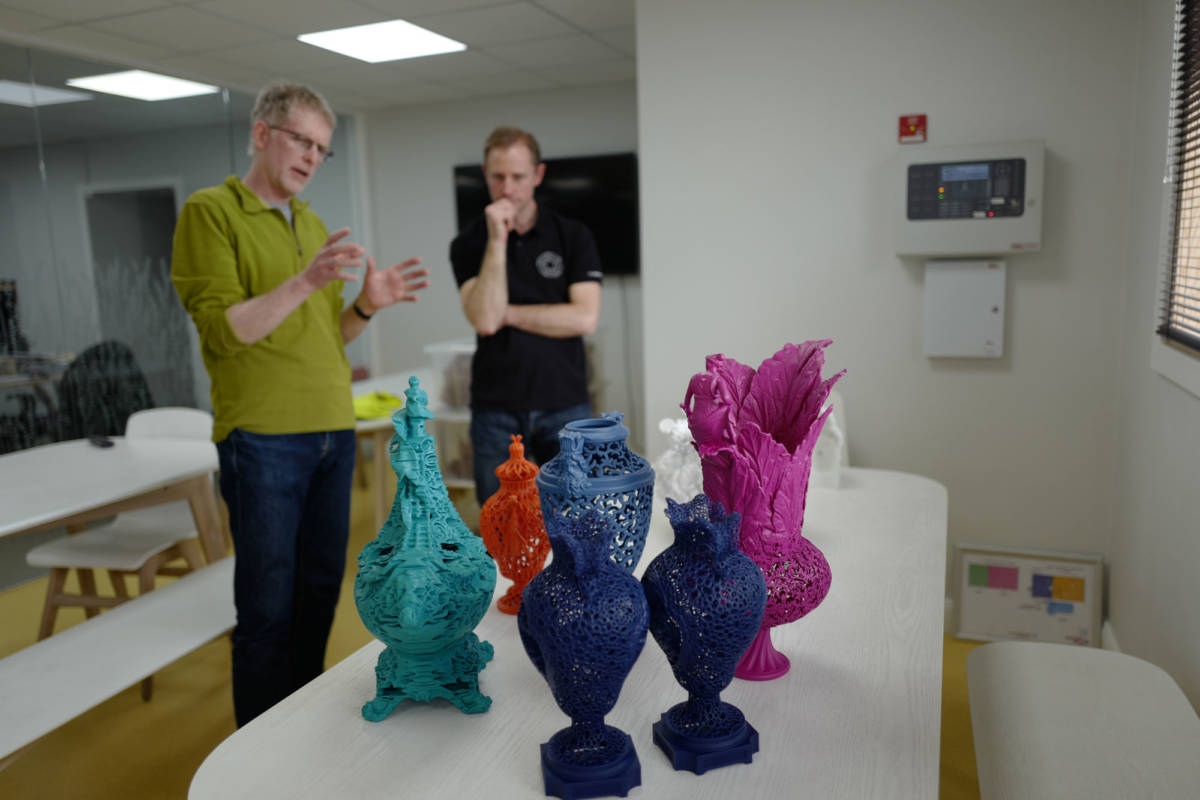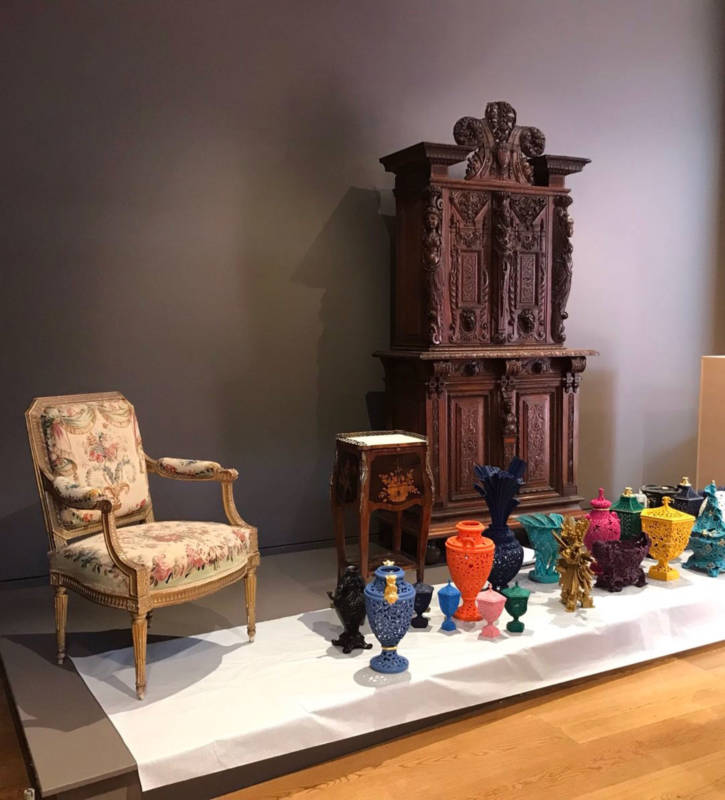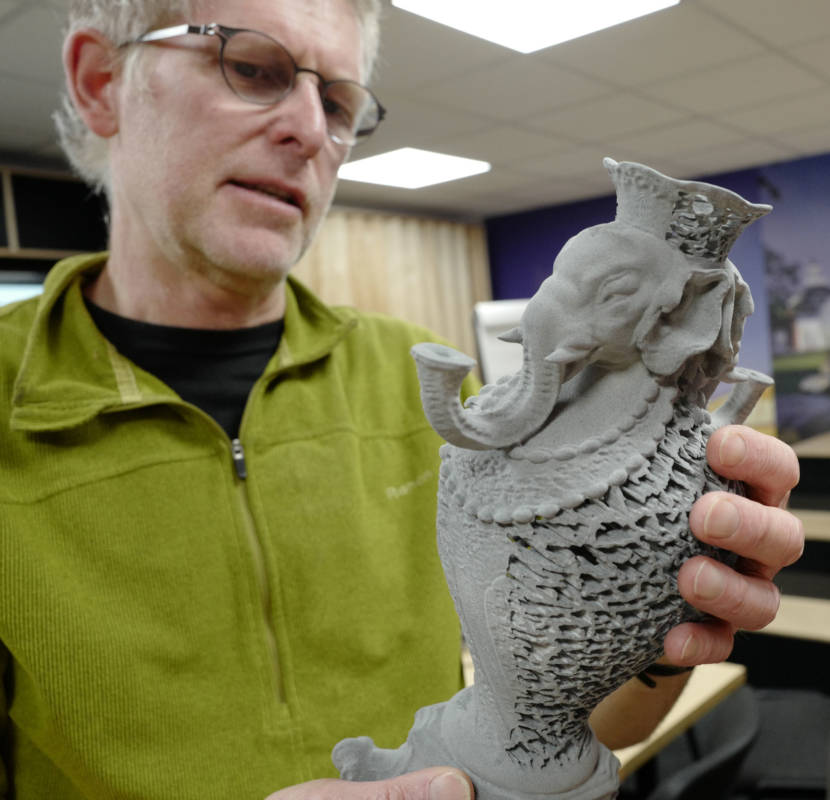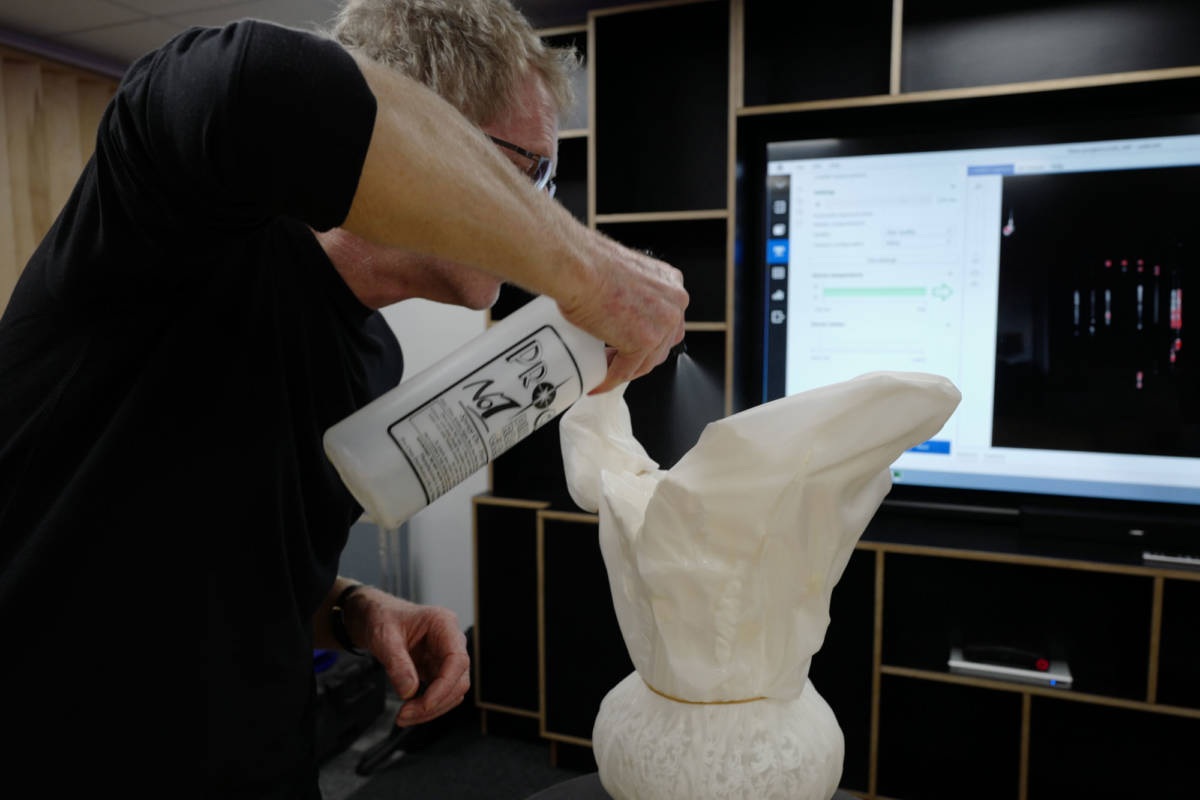
Digital Innovation with Michael Eden: Q and A
Meet Michael Eden, whose new exhibition 'Form & Transform' is on show in the Coach House Gallery until 21 October 2018. Michael has re-interpreted objects from the collections at Waddesdon Manor, using digital printing technologies. Here, Michael talks us through his creative process and practice.

What particularly drew you to working with the collections at Waddesdon?
In short, the stories. It’s not just a house and collection of bizarre and wonderful objects, but each [object] possesses a narrative of their own. As a visitor, each can be approached from a purely aesthetic viewpoint, but I wanted to ‘hear their voices’, to find out who made them, how were they made, for whom and why.
How did you approach researching an exhibition at Waddesdon?
Basically, I came to Waddesdon as an ‘open book’ or ‘blank page’, without any preconceptions or particular expectations. I wanted to soak up the atmosphere and use the opportunity of an exhibition to reflect and relate to the experience of wandering alone through the house and grounds at different times of the year. Once some objects had been selected as starting points, I then wanted to add a new chapter to their stories by creating interpretations firmly rooted in the 21st century.
Is there a particular object from the collections at Waddesdon that really stood out for you?
Rather than a single piece, it’s the impact of such a disparate ‘confection’ that somehow comes together as a united entity.

How has using 3D printing affected your work?
I used to make functional pottery – plates, bowls and cups. The use of new technologies has fundamentally changed my practice from one where function, aesthetics and material properties were the focus, to one where I have far more creative freedom. That isn’t a value judgement, I’m simply saying that working in the way that I do has allowed me to bring together wider interests, and positioned me somewhere between art, design, craft and technology. I can no longer call myself a potter, though that experience is fundamental to who I am; I simply call myself a maker, though some would read that as a provocative title!
What has 3D printing allowed you to do technically and conceptually that you were not able to do before?
To put it simply, it has allowed me to make the impossible object. When making pots by hand, I was limited by certain material and physical constraints, such as centrifugal force and gravity. Digital design and manufacturing has removed the majority of those limitations, allowing me to create objects that I cannot imagine making in any other way. However, the new tools do not lead the way, I firmly believe that the idea is the starting point and that the appropriate set of tools are chosen in order to translate that idea into a physical reality. I also believe that these new tools do not replace any others, and that as makers we simply have a larger toolbox.

Do you see the further development of printing with ceramic materials as a threat to traditional practices of working in clay?
No, not at all. If I wish to make a cup and saucer, I am not going to use Rhino 3D and Selective laser sintering (a computer assisted drawing programme and a method of 3D printing) . I will most likely throw some on the wheel, as they will have particular qualities that cannot be achieved with digital technologies. As I said before, these new tools do not replace anything, so making by hand or employing traditional industrial techniques still have their place.
How did you get involved with digital technologies?
It started with a fascination for the potential of computers (after we were given an Amstrad in the early 90’s!). When I learnt to write HTML, it ‘woke up’ another part of my brain to alternative ways of creative thinking. I then heard of ‘rapid prototyping’ as it was then called, and I could see the almost unlimited potential of the technology. I primarily use Rhino 3D software, mostly the free beta Mac version, though I also have the Windows V5 version.
Coming originally from a more traditional craft background, was there any hesitation when opting to produce work digitally?
None whatsoever! I firmly believe that ideas lead the way and that tools of one form or another need to be utilised in order to realise the idea as a tangible object. There is a misconception that the ability to engage with new technologies doesn’t require a similar development of skills to that of learning any other craft. The interaction with a virtual, onscreen object via a mouse requires the same conceptual leap of imagination as when a material is directly manipulated. That probably sounds contentious, so in addition I would say that I heavily rely on my previous experience of making by hand, and firmly believe that knowledge of materials and processes is fundamental to the creation of meaningful objects.
How important was it to study in London at the Royal College of Art in terms of contacts, exposure and influential support?
My reason for going to the RCA was to be able to study in a rigorously critical and supportive environment. I wanted to have my thinking challenged. And it was! I didn’t think at all about how it would affect my career. I can’t deny that it gave me more exposure than I could possibly have imagined which has been tremendously helpful to my career, but the work has to be able to withstand scrutiny – simply having the RCA stamp is definitely not enough!

In what way in particular does your experience as a traditional studio potter benefit the way that you work now?
I think that knowledge and experience of materials and processes is fundamental in order to realise an idea as an object. For instance, it’s important to know that ash is a much more flexible wood than oak and therefore more suitable for steam bending or making tool handles. Practice also develops a makers understanding of working in 3 dimensions, where proportion, scale and volume become part of tacit knowledge. I rely on this familiarity to guide me when creating my artworks on the Rhino 3D software. Though it’s possible to pan, zoom and inspect the pieces in minute detail, there’s still a huge amount of sensory information missing that can only be experienced when we handle the real thing. In other words, I have to translate what I see on the screen, because I know the piece is going to be different when it is manufactured.
Is the term ‘hand-made’ a label that you would associate with digitally-made objects?
That’s a tricky one! In one sense, yes, and I say that because I’m not quite sure what ‘hand-made’ actually means. How many makers simply use their hands? I can’t think of any that don’t employ simple or sophisticated tools of some sort. Which is more important, the expression of an idea in material form or the application of skill in batch production? Both have a place. My use of new tools (software) has been enabled by the development of new haptic skills (via mouse and screen), but underpinned by my previous experience and understanding of the 3 dimensional form. In short, the definition of hand-made – if there is such a thing – needs to be amended.

What do you think might be the limits and consequences of the ‘hand-made’, within a technologically rich contemporary ceramic design context?
I’m afraid I’m not a clairvoyant! It will be some time before we reach that point, as the technology is still in its infancy. I am confident that there will still be a place for the ‘hand-made’ (non-digital). The new tools do not replace the old, they simply give the maker more choices. Hopefully, in time the viewer will be less concerned about the difference between digital and non-digital making, particularly as I think some of the most exciting work will utilise hybrid processes.
Watch Michael Eden’s Facebook Live tour >
Want to know more about Waddesdon’s innovative technology? Find out more about ‘Virtually Waddesdon’ >




